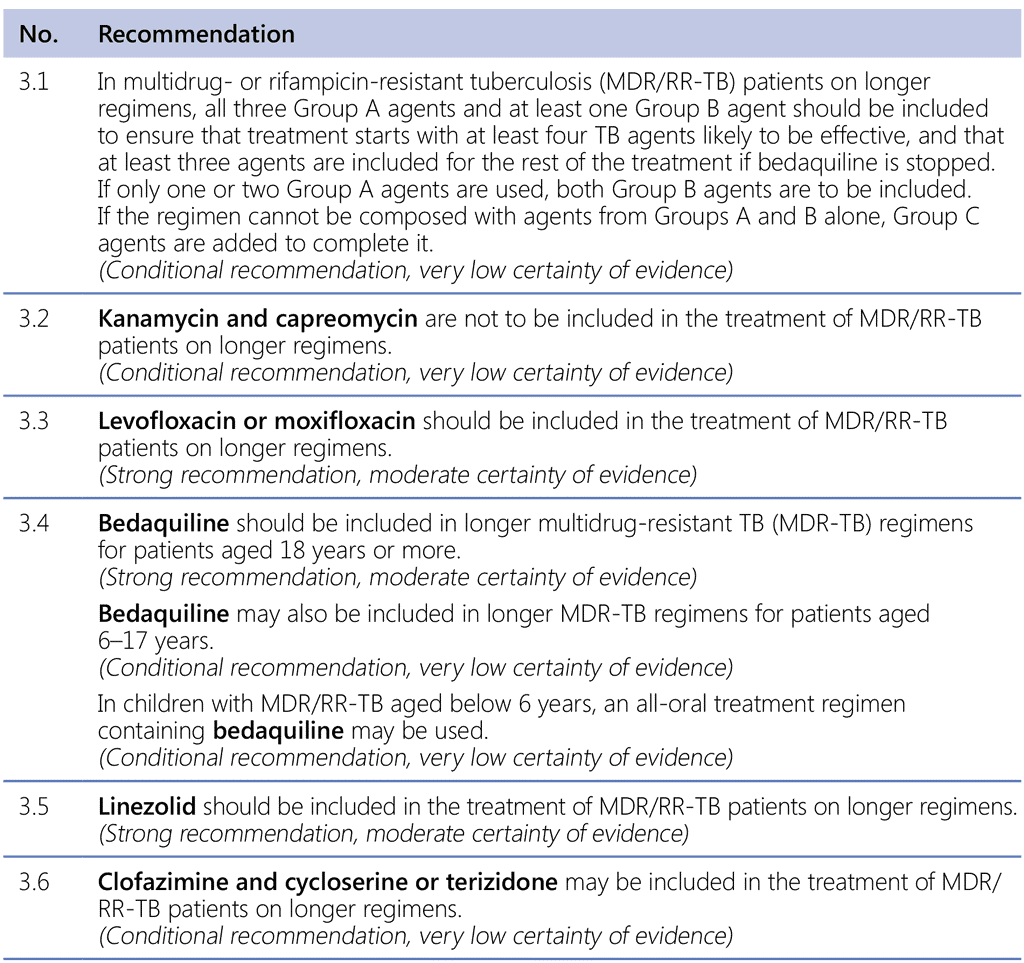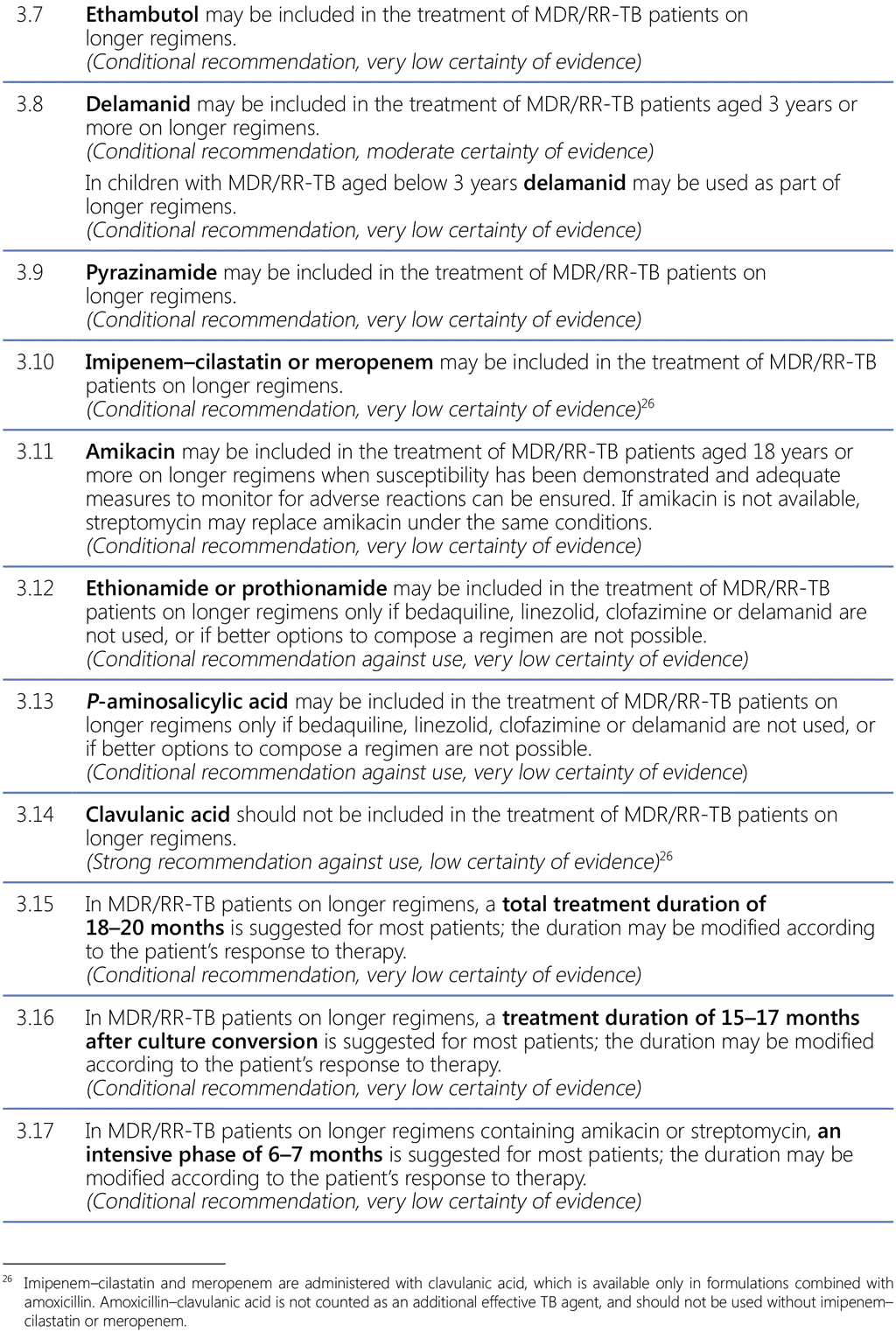Research gaps
In addition to summarizing the available evidence, the reviews undertaken for these consolidated guidelines revealed several gaps in current knowledge about critical areas in DR-TB treatment and care. The estimates of effect for patient studies were commonly assigned a low or very low certainty rating, which explains why most of the recommendations in these guidelines are conditional. Some gaps persist from those identified in previous TB treatment guidelines (11, 12).
 Feedback
Feedback

